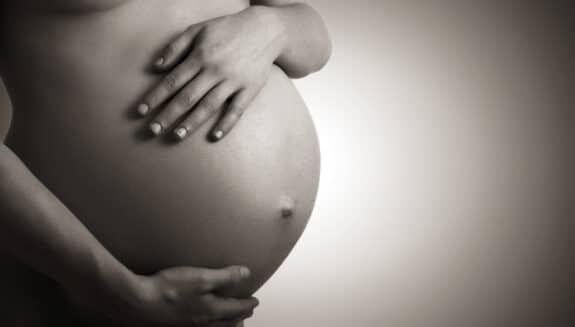I’m lucky to have gone through five healthy births. I can’t imagine the heartbreak and pain of losing your baby before you’ve even had the chance to meet them. Yet, for 24,000 mothers in the U.S., this is the reality. A loss that so many others could never fathom.
That’s what makes this new study on stillbirths so valuable.
More than 15 million pregnancies and their outcomes were examined and analyzed. They found that late birth – defined as any birth occurring after 37 weeks gestation – slightly increased the risk of a baby being stillborn. For each week past that, the baby’s risk of stillbirth increased even further. The greatest risk was found to be among those who did not deliver until after 40 weeks.
Still, the authors stressed that the overall stillbirth rate remained low, even among those found to have a “small but significantly increased” risk. Small, meaning only one additional stillbirth in the group. Significant because of the weight of that loss.
The point is that mothers can take this data into consideration when deciding whether to accept medical intervention when the baby goes past term. It might also supply a mother with the information she needs when dealing with a doctor that is hesitant to induce. In either case, the study offers value and information to those who are concerned about their risks.
“While there is an additional risk of stillbirth at 41 weeks, compared to 40 weeks, it is small,” said lead researcher, Professor Shakila Thangaratinam.
“Women who prefer not to have medical interventions such as induction of labour may therefore acknowledge this small additional risk, and choose to wait until 41 weeks so that they have more time to go into labour naturally. Meanwhile, other women may prefer to have discussions with their healthcare providers on induction after 40 weeks. So this is all about helping women make informed decisions on timing of delivery.”
It is the largest study on stillbirths and late delivery, to date.
Researchers also determined that black women have a greater risk of stillbirth when compared against the stillbirth rates of white women.
“We were surprised to see how much poorer pregnancy outcomes were for black women – they were up to twice more likely to experience stillbirth than white women. Healthcare professionals need to take these added risks into account when developing care plans for these women.”
Causes of that increased risk were not addressed by the study authors. However, there are likely many factors involved. Hopefully, healthcare professionals take note of this data and proceed accordingly.







